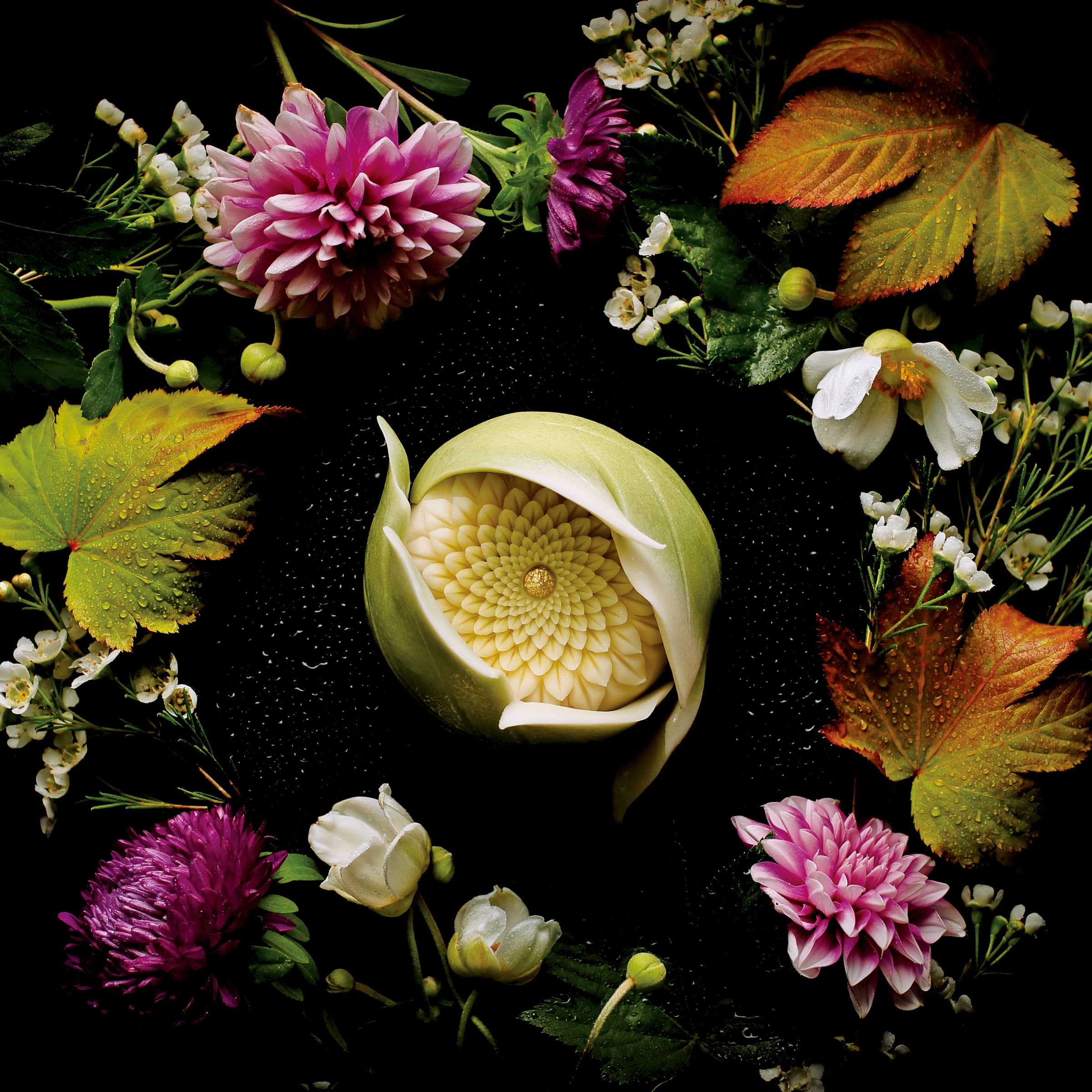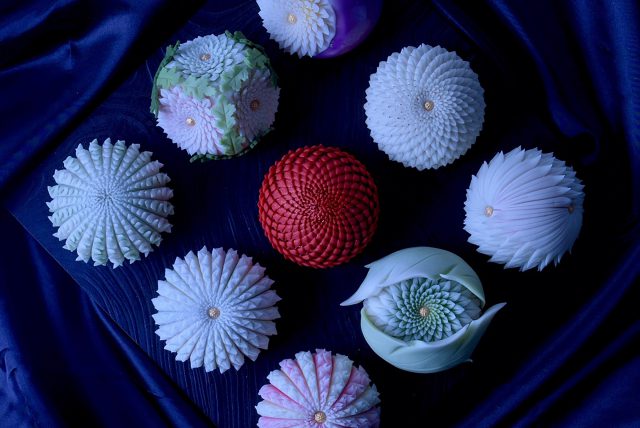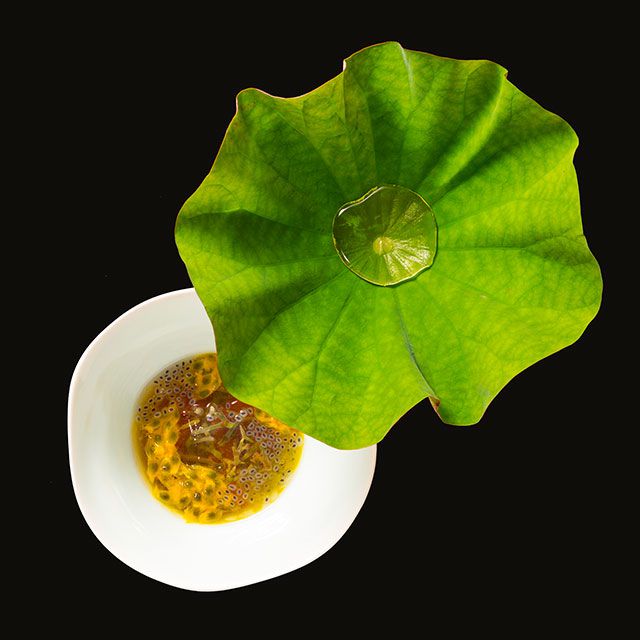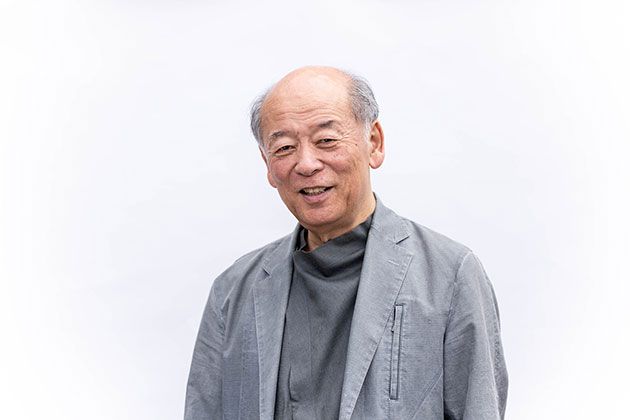From Yokosuka to Paris: A Third-Generation Wagashi Store Owner Takes the Silk Road West
Junichi Mitsubori appeared in the world of wagashi (Japanese sweets) like a blazing comet, enthralling audiences with his innovative on-stage performances. Today, though based in Japan and elsewhere in Asia, he is in demand at events all over the globe.
Mitsubori calls his performances “temae,” a word also used by practitioners of the tea ceremony. His primary raw material is nerikiri, one of the key ingredients in wagashi—a kind of sweet dough made by combining bean paste (an) with gyuhi, an extra-soft form of mochi (“rice cake”). At Mitsubori’s temae, the audience watches in fascination as he sculpts the nerikiri into abstract forms—sometimes fine and delicate, sometimes bold and dazzling—that evoke floral and seasonal themes. The table before him is arrayed with tools specially ordered from blacksmiths, such as double-edged wagashi shears, as well as more familiar items like wooden spatulas and needles, all of which see use over the course of the temae.
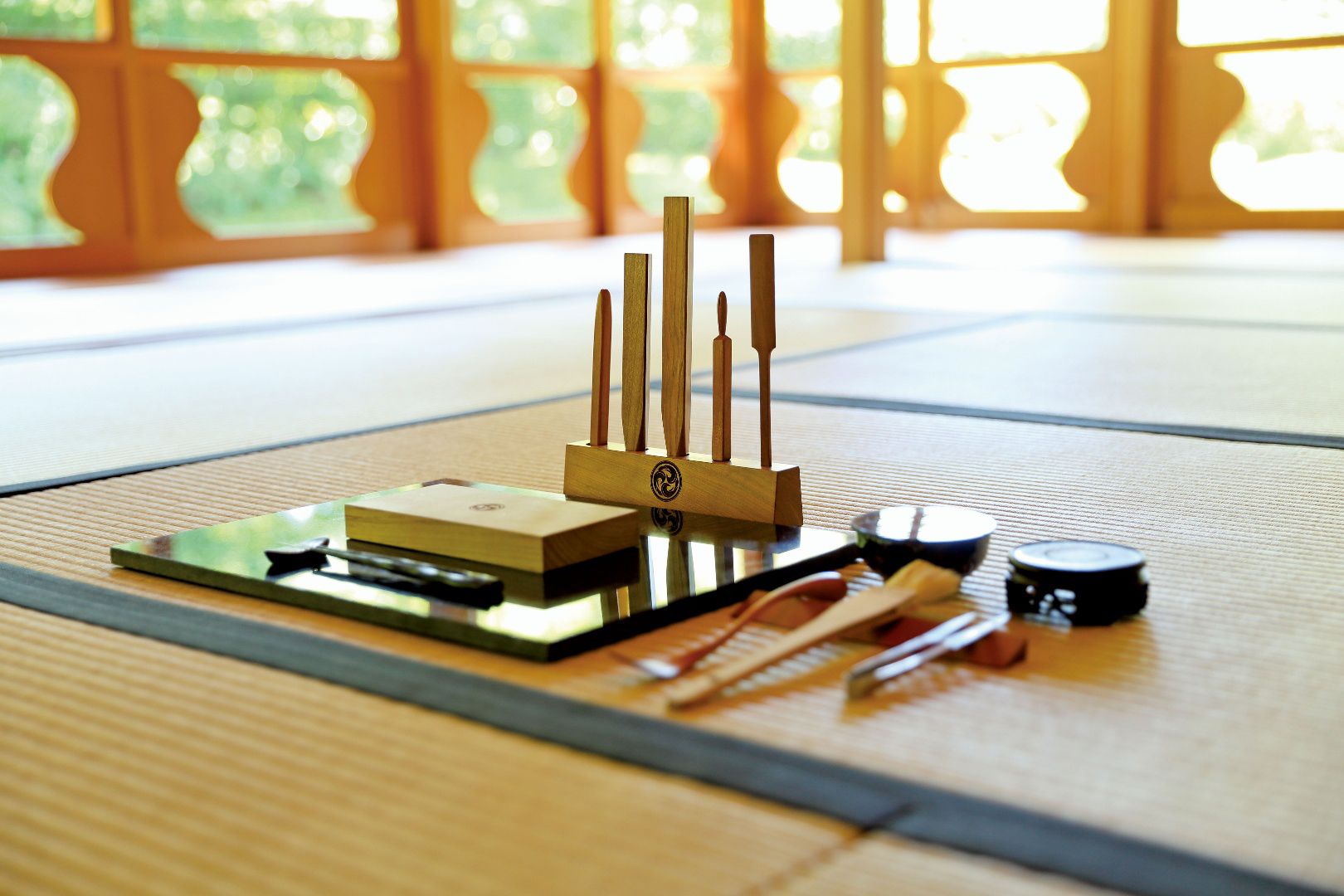

Mitsubori’s tools include double-edged wagashi shears specially ordered from a blacksmith
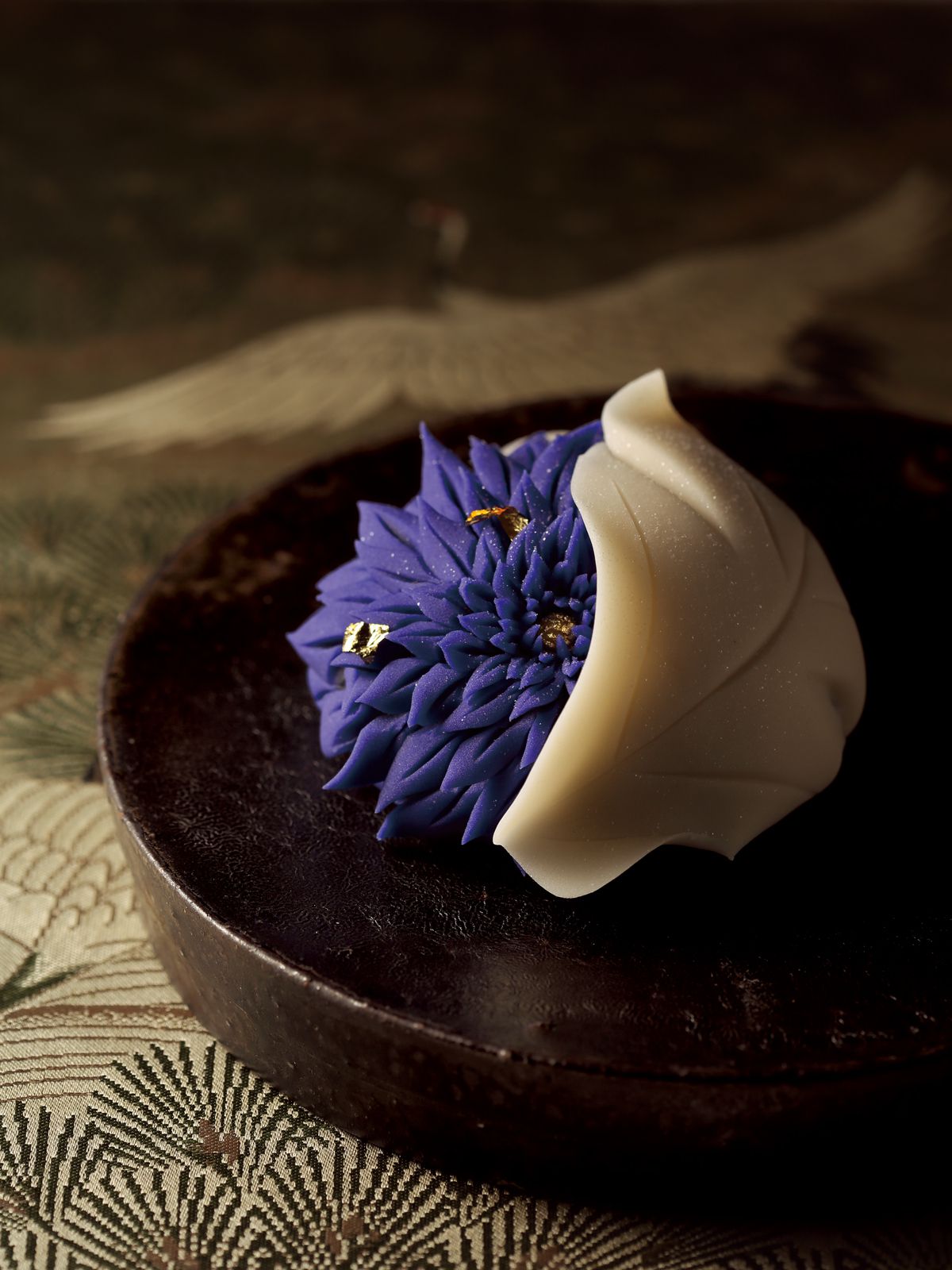

“Phantom.” Inspired by the mask Mitsubori wears when performing.
“My family opened a wagashi store in Yokosuka called Izumiya in 1954,” says Mitsubori. “Helping with the ohagi (a kind of rice cake covered in sweet bean paste) came naturally to me from a young age. I was their oldest son, so it was always expected that I would take over the store as the third-generation owner.”
Rebelling against the prospect of a predetermined future, Mitsubori set his sights on becoming a musician, which he felt would allow a freer way of live. He continued to work at Izumiya, but also formed bands and gigged heavily, playing folk and rock music. His turning point came at the age of 27, at a wagashi event held in Oregon.
“Americans viewed wagashi as works of art, and this was shocking to me. I felt pride in this aspect of traditional Japanese culture, but I also sensed the possibility of a new form of self-expression as entertainment. When I returned to Japan I devoted myself anew to the craft, particularly the possibilities of nerikiri, the flower of wagashi.”
When Mitsubori began this serious engagement with wagashi and its possibilities, he still had no store or professional name. With his generational peers in the industry already establishing their status, this gave his quest a certain urgency. On the other hand, his musical career had accustomed him to performing in the spotlight, and that experience still serves him well on-stage today. At the age of 29, he formally inherited Izumiya and began to appear in the media. As his abilities and individuality deepened, his thoughts turned to the world outside Japan.
“I thought that my first move toward international audiences should be to win them over in Paris. But an acquaintance warned me that I shouldn’t go to Paris until they actually invited me, so I decided to see what I could achieve in Asia first. I traveled around China, Hong Kong, Vietnam, and Thailand before finally traveling the Silk Road west to France.”
In October 2017, Mitsubori attracted attention for his first exhibition at the Salon de Chocolat, an international chocolate festival. The following autumn, he accepted a five-day performance engagement there.
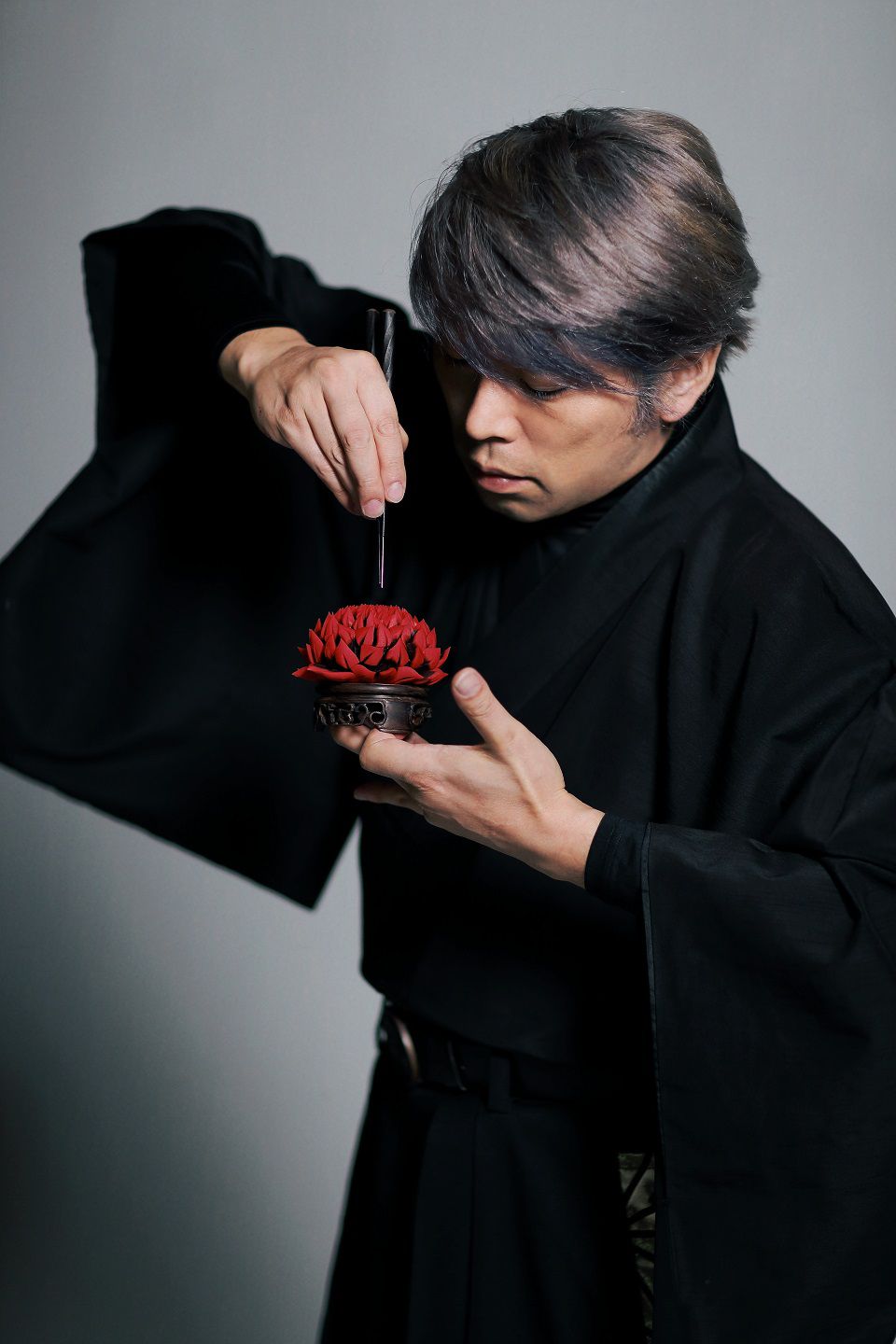

Mitsubori shapes his creations masterfully with specially ordered needles and shears
Ichigo Ichie —Once-in-a-Lifetime Performances that Resonate with Senses and Soul
“The wagashi industry is on a downhill slope. In the world of western sweets, pâtissiers and pâtissières are heroic figures. People admire them and dream of joining their ranks. In Japan, however, virtue is thought to lie in maintaining the family business rather than self-expression in itself. I decided that if I was going to make a name for myself as an individual, I should specialize, and that’s how I became an artist of hand-sculpted nerikiri specifically.”
For the past three years, Mitsubori has consciously prioritized his international activities, only spending around 100 days per year in Japan. In December 2018, some of these days were devoted to a live event in Daikanyama, Tokyo, called “Kabuki—Xmas Live in Tokyo” (with “Kabuki” spelt using unique characters implying “sweets and dancing” instead of the usual “songs and dancing”). Audiences leapt at this rare opportunity to see Mitsubori in the land of his birth, proof of the high level of interest in his activities.
At Daikanyama, Mitsubori took the stage in black kimono, wearing a warrior’s mask modeled on the demonic “Hannya” of Noh theater. With characters meaning “Harmony, Respect, Purity, Tranquility” as a backdrop, he exercised his dazzling technique to craft his first wagashi in minutes. In all, he created seven beautiful nerikiri creations in just under an hour. How much preparation goes into a performance like this?
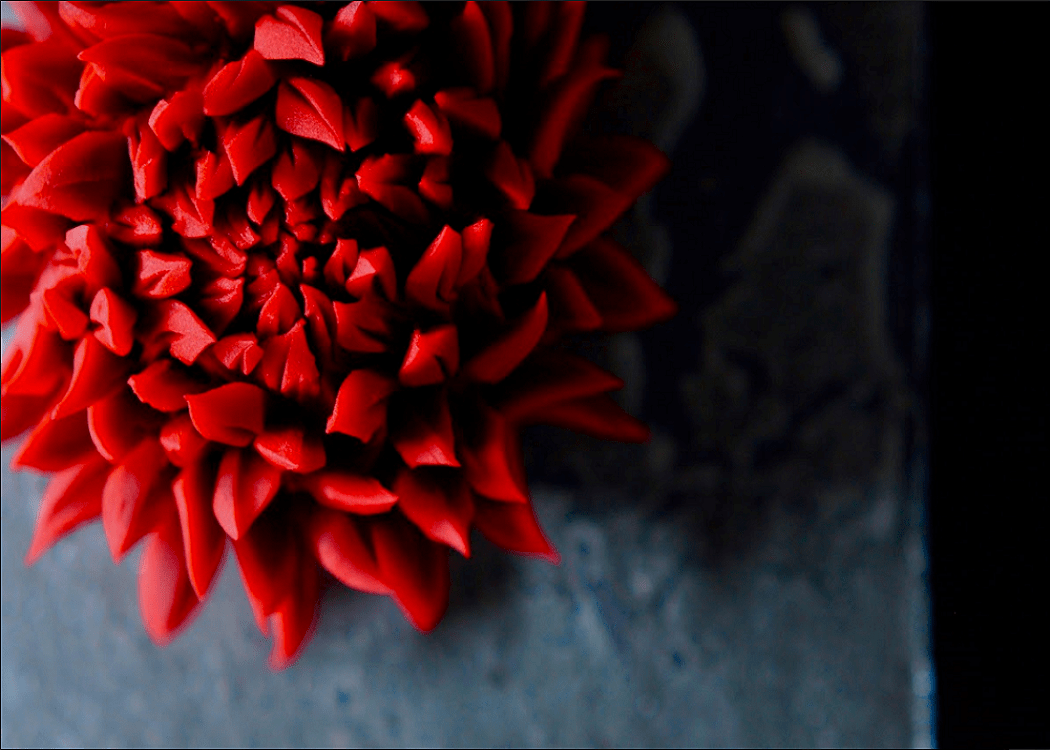

A triumph in nerikiri, with each petal individually snipped with shears to evoke a chrysanthemum in bloom
“I don’t decide anything in advance. Just before the performance, I come up with designs in my head, and then express what I feel on-stage. Performance is a stage for the soul—it’s about finding a sympathetic resonance with your audience. I do get nervous, but instead of staying tense I try to relax the atmosphere too. My goal is to respect what happens in that space and share that sensibility.”
Mitsubori’s temae change day by day, and he has further refined his technique with instruction from masters of the tea ceremony. The black kimono, he says, is iconic of Japanese pop culture, and while some question his use of the Noh-style mask, he is adamant that making the right visual first impression matters.
Junichi Mitsubori
Head of Kadou Ichika-Ryu
Born 1974 in Yokosuka, Kanagawa. After graduating from Tokyo Confectionery School, took up the family trade of wagashi and inherited the Izumiya store in Yokosuka as the third-generation owner in 2003. Creates wagashi with the same attention to beauty of action as seen in the tea ceremony, and strives to promote Kadou—the “way of sweets”—both within Japan and around the world through nerikiri workshops and other activities.
Photography ©︎ Junichi Mitsubori , Wagashi-Izumiya
Special Thanks to Kanami Okimura , Mitsukoshi-Isetan
